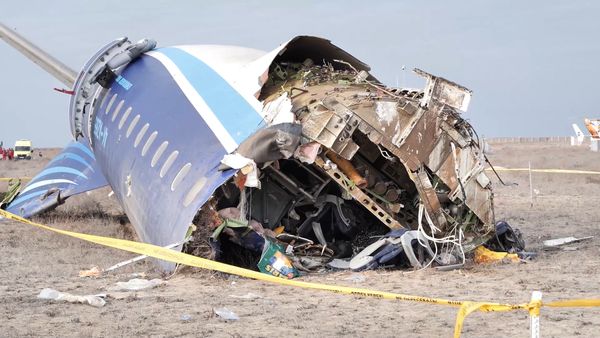
Israel and its defence force have waged a war for hearts and minds on social media for some time (remember the rocket emojis of May 2021, beefing with the Pakistani cricket team and picking a fight with supermodel Bella Hadid?), but their latest strategy has included a new element: disseminating increasingly graphic content juxtaposed with disconcertingly flippant social media posts.
On October 29, the Israel Foreign Ministry (@IsraelMFA) account reposted a since-removed post depicting what was claimed to be “zip ties and electrical chords [sic] used to tie victims before they were murdered”, in reference to the October 7 incursion. The same day, the account posted a thank you to Australian actor Nathaniel Buzolic for supporting the country.
One tweet reads sarcastically: “Looking forward to seeing Hamas raise the rainbow flag across Gaza as a thank you for your solidarity,” referring to a video depicting a pro-Palestine demonstration in New York with a combined LGBTQIA+/Palestine flag.
Adopting a casual, fun and friendly tone for social media accounts for professional organisations has been a worldwide trend for a significant time, but adopting those styles and strategies has broadly been considered inappropriate for nation-states.
Notably, Ukraine’s Foreign Affairs Ministry has a similarly active presence on social media, with an equally laissez-faire attitude to filtering content for diplomatic purposes, but the Ukrainians are altogether distinct from the Israelis in their reticence to post graphic photos and videos from the frontlines.
The X account for the state of Israel, @Israel, shows a bio that clarifies that the account is actually the country’s official account (“Shalom (yes, it’s really us)”), managed by the Foreign Affairs Ministry’s digital diplomacy team.
It’s a necessary clarification, because alongside diplomatic posts that wouldn’t look out of place on any country’s official social media channels, Israel’s Foreign Affairs Ministry posts a mix of memes, 40-second ads in English that appear to be made as television spots, retweets of social media commentators of varying repute, and now increasingly violent content. Some posts were later deleted which adds to the general air of chaos and confusion.
Israel’s social media presence is split primarily between three accounts: @Israel; @IsraelMFA, representing the Foreign Affairs Ministry; @IDF, representing the Israel Defense Forces. Although @Israel remains more tempered in its language, the Foreign Affairs Ministry and IDF are less reticent about posting graphic content. Notably, where @Israel will use language such as “brutal terrorists” to describe Hamas, @IsraelMFA and @IDF will explicitly equate Hamas to ISIS.
Israel’s digital diplomacy team also relies heavily on a vocal network of its ambassadors and spokespeople, who along with the country have all regularly used the hashtag “#HamasisISIS” and attacked the legitimacy of Western media.
A spokesperson for Israel’s mission to the EU told Politico this week that the strategy to share increasingly violent content is new: “We would never post such graphic things before.”
Pushing ads and flooding social media is just one part of Israel’s communications strategy, with traditional outlets also receiving direct briefings.
The Seven Network was the only Australian commercial network to explicitly refer to the IDF’s media briefing of a number of the world’s journalists in its October 24 bulletin. Senior reporter Chris Reason led an eight-minute segment, leading off the release of 85-year-old Yocheved Lifshitz and 79-year-old Nurit Cooper to the Red Cross.
Reason then detailed how Israel invited 100 members of the world’s press to a conference to show 68 seconds of bodycam footage from Israeli soldiers of the Hamas assault on October 7, with Seven one of the only Australian networks present.
Pressed by Reason on the motivation to directly brief the world’s media in such a manner, IDF Major General Mickey Edelstein said it was to “correct the balance” of favourable coverage for Palestine.
In the early days after Hamas’ deadly attack on Israel, violent videos and graphic images purportedly from the attack flooded social media — these were mostly seeded by Hamas via Telegram rather than via official accounts. As The New York Times reported, Hamas would “take advantage of the lack of content moderation on some social media sites — particularly X and Telegram” to post audio, video and photographs. In some cases the content was found to be fake, with the origins unclear. According to the NY Times, the fear and confusion were part of the strategy, according to a Hamas official who would speak only on the condition of anonymity.
The Hamas media centre recently released video of French-Israeli hostage Mia Schem on Tuesday asking to be released as soon as possible. Hamas has also made a number of televised addresses through representatives of its armed wing, the Qassam Brigades.
Meanwhile, reports from on the ground in Gaza are increasingly hard to access, with Gazans cut off from the outside world after Israel’s revocation of electricity and fuel to the area. Local journalist TVC News’ Ashraf Shannon told NBC on October 29 that he didn’t know whether his family in the Gaza Strip was still alive and that inconsistent satellite phones were his best option for communications.
“I think Israel, by this blackout, they are trying to stop the world from seeing what is happening in Gaza,” he said.
Freelance journalist Roshdi Sarraj, who had filed a story from Al-Shifa hospital for ABC’s 7.30 earlier in the week, was killed by shrapnel from an Israeli air strike in his home in Tel Al-Hawa.
Bringing the odd juxtaposition of sarcastic posts and violent imagery into stark relief over the weekend, Israel’s social media feed added directives to Gazans to evacuate — IDF spokesman Daniel Hagari issued an “urgent military advisory” on social media on Saturday, urging Gazans to relocate to the south: “For your immediate safety we urge all residents of northern Gaza and Gaza City to temporarily relocate south. This is a temporary measure. Moving back to northern Gaza will be possible once the intense hostilities end.” He warned that the “impending IDF operation is set to neutralise the threat of Hamas with precision and intensity”.







